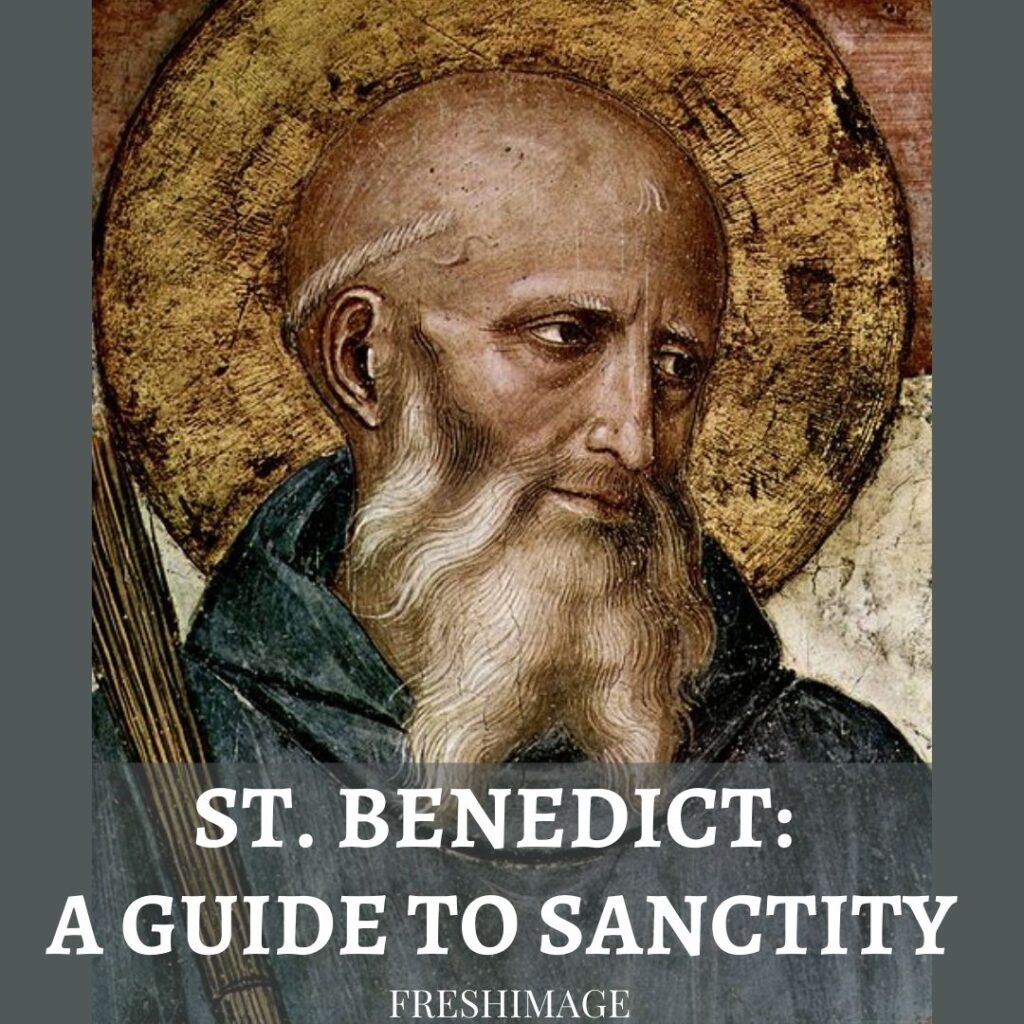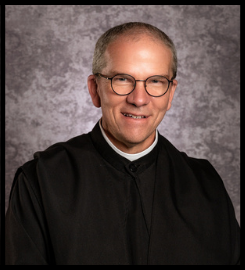
July 11
Each Sunday the Church proclaims belief in “the Communion of Saints” as it says the Creed. We say it so quickly and by rote memory, it perhaps does not dawn on us how important this tenet of our faith is. However, its importance is most clearly reflected in its near daily manifestation in the life of the Church. Throughout the year we celebrate saints on their particular feast day, and near the end of the Liturgical year, we celebrate all the saints together in one “Communion of Saints” on the Solemnity of All Saints. In the early history of the Church, the saints were all martyrs, those who shed their blood for the Gospel. However, as time went on many Christians from various walks of life began to be recognized for their holiness of life. We had founders of religious orders, great theologians and teachers, holy men and woman from all walks of life, mothers, fathers, children and so on.
One of these great saints of the Church, recognized both in the East and West, is Saint Benedict. Saint Benedict was born in 480 AD in a wealthy patrician family in Nursia, Italy, during a point in history when the Roman Empire was falling into ruin. As a young man Saint Benedict left his home of Nursia to study in Rome. He soon became disgusted by the moral-decay and disorder of the city. Saint Benedict subsequently went to Subiaco, Italy where he lived alone in a cave for three years. People began to hear of the holiness and wisdom of Saint Benedict and came to follow him. However, the strictness of Saint Benedict’s life was too difficult, and in jealousy those early disciples tried to poison him. Despite this drama, monasteries began to pop up in the area. After establishing the monastic life there, Saint Benedict left this region to found another monastery on a mountain in Cassino, Italy south of Rome. Saint Benedict’s holiness spread here as well. Many came to see him and follow him.
Saint Benedict is most remembered for his Rule of Life for monks and nuns, known simply as the Rule of Saint Benedict. Seeing his near life-ending experience of being poisoned as the consequence of imposing a very taxing and rigorous life on those who followed him, the roadmap of living charted in the Rule is known for its moderation as well as its direct and ordered guide for monastic living.
Many miracles were worked through Saint Benedict and his intercession. Saint Benedict was a faithful servant both to his monks and those in the area around the monastery. The great monk and pope, Saint Gregory the Great, who lived just after the period of Saint Benedict, wrote a life of the great saint in his “Dialogues”. In it, Saint Gregory speaks about Saint Benedict, “If anyone wishes to know his character and life more precisely, he may find in the ordinances of that Rule a complete account of the Abbot’s practice; for the holy man cannot have taught otherwise that as he lived” (Dialogues, 2.36). Saint Benedict’s Rule went on to have a major influence on Western civilization as the monastic order that was founded upon it, the Benedictines spread. The Benedictine life is famously a combination of ora et labora, and so Benedictines can be found cultivating an intense life of prayer and study as well as many types of work, including agriculture, education, pastoral work, and even brewing beer.
Saint Benedict is an example of one of the great saints of the Church with an extraordinary road to sainthood. He is a tough act to follow. However, this shouldn’t discourage us in our quest for sainthood. The Church calls us to be saints. Pope Saint John Paul II encouraged this many times during his reign as pope as well as did other popes. We can take comfort in knowing the saints were broken human beings like you and me. The saints have their own weaknesses, human struggles, brokenness but they didn’t let these stop them. Jesus wants us to give all our weaknesses and sufferings to Him.
The founder of the Opus Dei, Saint Josemaría Escrivá, who lived in the last century said, “Don’t forget that the saint is not the person who never falls, but rather the one who never fails to get up again, humbly and with a holy stubbornness” (In the Footsteps of Christ, 131). And Saint Paul says, “Now I rejoice in my sufferings for your sake, and in my flesh I am filling up what is lacking in the afflictions of Christ on behalf of his body, which is the church” (Col. 1:24). So, we offer our entire selves to the Lord in service to Him and our neighbor. Saint Benedict’s way of doing this was as a monk and as a founder of a religious order. God is calling each of us to do the same in our particular vocation, whether it be married life, consecrated life, the priesthood, students, athletes, lawyers, doctors, doorkeepers, all are called to strive for sainthood as members of Christ’s Mystical Body by virtue of our Baptism. The life of the Church through devotions and the sacraments, in particular the Eucharist, aid us on our path to glory.
As we reflect on the life of this great saint, let us remember that his is merely one of the diverse roads we flawed human beings travel to sainthood. It is by travelling these many diverse paths that the saints together and by the grace of God come to forge the one Communion of Saints. We should take comfort in knowing holiness isn’t something that just happens, it’s a process of transformation that takes place as we discern God’s unique call to each of us, and learn to navigate this life in light of that call, as Benedict did. Holiness is definitely something we don’t do on our own, or something that happens all at once. It’s something we take up each sacred moment of our lives. We move forward in trust in God’s Providence, in the hope that we may become the person our heavenly Father has called us to be.
PAX,

Fr. Aidan is a Benedictine monk and priest of the Abbey of Saint Mary and Saint Louis in Saint Louis, Missouri. Father Aidan grew up in Saint Louis with his mother and father and two sisters in a working class Irish Catholic family. He was ordained to the priesthood in 2015, on the Feast of the Holy Name of Mary, and currently serves as the Pastor of Saint Anselm Parish in the Archdiocese of Saint Louis. Fr. Aidan holds a BA in English Literature from Webster University in Saint Louis, and a MDiv from Saint John XXIII National Seminary in Massachusetts.
Father Aidan prays his contributions will help the faithful discover how the Benedictine virtues of obedience and humility, can be helpful in their particular vocation to seek the image of Christ through purity of heart in their lives.
Beautifully written, Fr. Aidan! May we rediscover the virtues of humility and obedience with the help of St. Benedict!